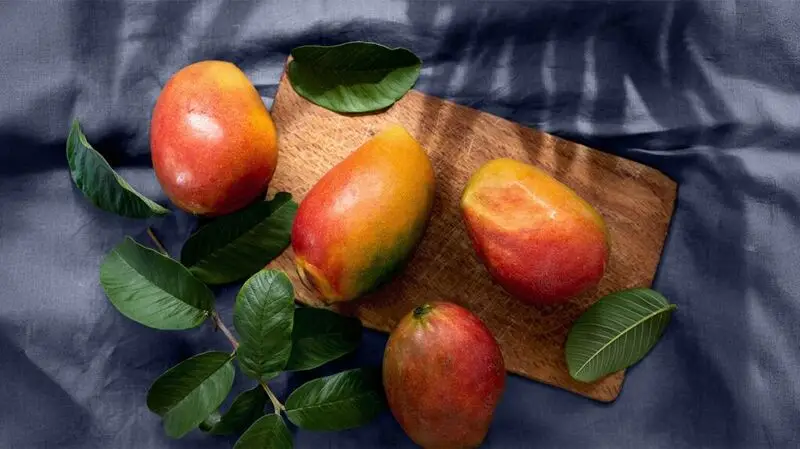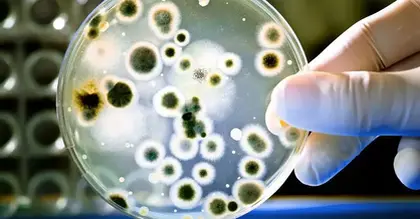
- In a recent study, mangoes more effectively improved prediabetes risk factors in a new study than low-sugar granola bars.
- The key to mangoes’ better results likely lies in their being a whole food with natural fiber, vitamins, and nutrients.
- However, experts agree that the best way to avoid type 2 diabetes is to eat a balanced, healthy diet and be physically active, rather than to depend on a single ‘superfood’ to prevent the condition.
A new study suggests that at least one high-sugar tropical fruit, mangoes, may be more likely to help prevent type 2 diabetes than a low-sugar snack.
The authors of the study, which appears in the journal Foods, suggest that the correlation between a preference for mango and a lower risk of diabetes may have to do with mangoes being more than simply a sweet treat, since they are a natural whole food that contains fiber, vitamins, and nutrients.
Low-sugar snacks designed to be convenient and tasty, however, may not be as nutritionally rich, may contain additives, and may thus be less likely to be healthy.
For the study, funded by the National Mango Board, two dozen participants age 50 to 70 years in age were divided into two groups. None had received a diabetes diagnosis at baseline. The study was conducted at Florida State University.
Individuals in one group received a fresh mango each day containing 32 grams (g) of sugar, while members of the other group were instead provided with a calorically similar low-sugar granola bar containing 11 g of sugar.
During the 24–week trial, researchers tracked participants’ blood glucose (sugar) levels, insulin sensitivity, and measured changes in body fat. Higher blood glucose, reduced insulin sensitivity, and increases in body fat are risk factors for type 2 diabetes.
Twenty-three participants completed the study. The authors found improved blood glucose control, enhanced insulin sensitivity, and reduced body fat for the 11 members of the mango group.
As a result, the study reports a reduced risk for developing type 2 diabetes, based primarily on improvements in blood glucose levels.
Its authors note that this focus is a limitation of the study.
It is also the case, the authors say, that the limited racial and ethnic diversity of the participant sample may reduce their findings’ generalizability. In addition, dietary adherence throughout the trial was self-reported, which is not always reliable.
“This study is an interesting contrast on [the] potential effects of natural sugars such as found in fruits, versus sugars from granola bars (in this case) that may be an added sugar, versus [sugars] naturally found in the environment,” Jason Ng, MD, told Medical News Today.
Ng teaches endocrinology and metabolism in the Department of Medicine at the University of Pittsburgh, and was not involved in the study.
While it may seem surprising that a food with as much sugar in it as a mango could still be a healthy choice when one is trying to avoid type 2 diabetes, the idea makes sense to Ng and to Şebnem Ünlüişler, MSc, genetic engineer and Chief Longevity Officer at the London Regenerative Institute in the United Kingdom, also not involved in the study.
Asked if tropical fruits really make sense as a dietary choice in this context, Ünlüişler replied “broadly, yes.”
“Whole fruits — including mango — are generally safe and often beneficial as part of a balanced diet for diabetes prevention and for many people with type 2 diabetes, with a few important caveats,” she told us.
“The key is in moderation,” Ng pointed out. “Some fruits have higher amounts of fiber, which can help reduce sugar absorption, while other fruits have compounds that have anti-oxidant properties that can help maintain metabolism.”
Ünlüişler described whole fruits’ “fiber, phytonutrients and a food matrix that slows carbohydrate absorption, alters gut microbiota and blunts post-prandial glucose excursions compared with equivalent calories from refined foods.”
“So, in moderation,” said Ng, “these fruits can have some positive effects for diabetes prevention and people with [type 2 diabetes]. Overconsumption, of course, leads to an influx of sugars overall, which can be unhealthy.”
Ünlüişler described the mango’s “constellation of compounds” that may help one avoid type 2 diabetes. These include:
- dietary fiber that slows gastric emptying and glucose absorption, and reduces glycemic peaks
- polyphenols and phenolic acids that exhibit insulin-sensitizing, anti-inflammatory, and antioxidant effects in preclinical models
- carotenoids (beta-carotene, lutein) and vitamin C, with antioxidant and anti-inflammatory actions that may protect beta-cells and the vascular endothelium
- micronutrients, such as potassium and magnesium in modest amounts that support metabolic homeostasis (balance)
- fruit matrix/whole-food interactions, or the physical and chemical matrix of mango that modifies absorption mechanisms, and gut microbial fermentation products that influence insulin sensitivity and incretin responses, along the lines of the effect produced by GLP-1 drugs.
The best dietary strategy for avoiding type 2 diabetes — accompanied by maintaining sufficient physical activity — is taking a broader view of the foods one eats, according to the experts.
“Selecting individual foods can be a strategy, but can be difficult to maintain,” pointed out Ng.
“Targeting a single ‘magic’ food is rarely the best strategy,” Ünlüişler agreed.
“Genetic background, habitual diet, energy balance and overall dietary pattern matter far more than single items. A whole-diet approach — replace refined snacks with whole fruit, favor whole grains, legumes, nuts, vegetables, and healthy fats — is evidence-based.”
– Şebnem Ünlüişler, MSc
“This diet,” said Ng, “can be easier to maintain, and ultimately, Healthier than focusing on eating specific foods.”
At the same time, he suggested, it can be helpful to “avoid specific foods which are known to be high in refined carbs and added sugars, such as soft drinks, for example.”





